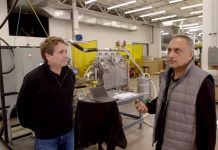Hang gliding has been around for some time. There have been a number of versions of hang gliding that have been invented over the years, with the very first models appearing in the 1880s. Otto Lilienthal is often seen as the Father of Hang Gliding as he began duplicating some of the work of his contemporaries as early as 1874 and created prototypes in 1891 that could fly over 80 feet on a regularly basis. By the 1920’s, competitions were being held for hang gliding.
What we think of hang gliding today, however, was invented in 1963 by an Australian man named John Dickenson. His invention also became the foundation of what would be Ultralight Aviation, or the kit aircraft that recreational aviation enthusiasts could build in their own garage as a form of paragliding.
Dickenson is known for some other inventions beyond just the hang glider. Here is a brief look at some of the other work he created over the course of his career.
The Outrigger
Combining a love for sailing with his love for lightweight machines and tools, Dickenson developed the outrigger so that small sailboats could be stable in the water. He’d always had a love for flight and for sailing, always tinkering about with these two fields as a hobby throughout his career.
Flow Measuring Equipment
The primary focus of Dickenson’s career, however, was to be able to measure the specific flow of liquids in a variety of situations. To that extent, Dickenson created specific equipment that would allow these measurements to take place in a variety of situations. If you community has a wastewater processing plant, for example, then you can probably see an example or an adaptation of Dickenson’s work.
The Megaspark
Although the Megaspark wasn’t one of Dickenson’s most successful inventions, the idea behind it held a lot of promise and could even be considered a forerunner of the continuously variable transmissions that are becoming standard in vehicles today. Once installed, the Megaspark didn’t need any adjustment whatsoever. It would make a vehicle more fuel efficient because it created a better overall combustion thanks to longer sparks.
The Hydrofoil
Although the first Hydrofoils were invented a number of years before Dickensen began his inventing career, he did created a version that worked without the typical dual engine concept. His version focused on a combined sailboat and hydrofoil design so that people would have an affordable method of being able to enjoy the water on a warm Australian day. These boats are also extremely lightweight and are easy to control.
Water Flow Sensors
As his career continued to blossom and grow, Dickenson noticed that he would need an electronic method of being able to track liquid measurements instead of relying on visual confirmation. To accomplish this, he invented a sensor that was able to track all of the needed information that companies or agencies would need so that every measurement could be as accurate as possible.
Strong proponent of individual liberty and free speech. My goal is to present information that expands our awareness of crucial issues and exposes the manufactured illusion of freedom that we are sold in America. Question everything because nothing is what it seems.



















